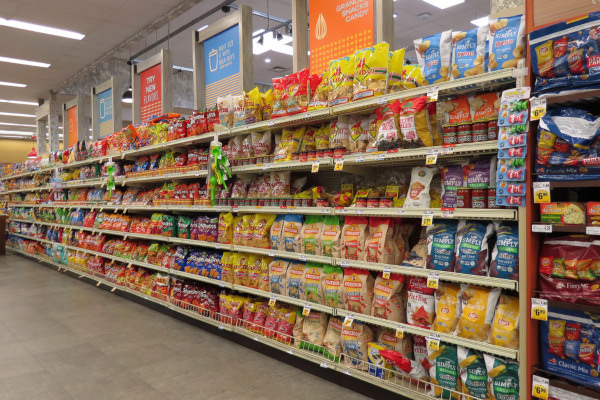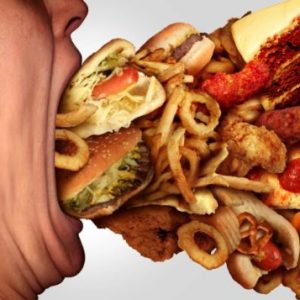Snacking Skyrockets and daily eating habits are undergoing a major upheaval. The trend started during the the COVID Crisis, when snacking took off with home-workers. And it continues as life settles back into some kind of ‘normal’…
 A mega supermarket-snacks aisle: One of the most powerful
A mega supermarket-snacks aisle: One of the most powerful
drivers of the explosion of snacking in the 20th century.
First things first
A new feature exposée from CNN reveals that 64 percent of Americans now prefer to eat a number of smaller meals throughout the day. That’s a fast shift from the long-time subscription to the larger ‘three squares’ – breakfast, lunch and supper. And it also signals what may be a serious challenge to healthy eating recommendations updated over the past few years in most developed countries.
A 2021 snacking survey by global candy and snack brand holder Mondelez reports a compelling 59 percent over pre-COVID 2019. The Mondelez survey also reported that 62 percent reported replacing at least one meal a day with snacks. That’s another troubling trend, nutritionists and doctors say.
One major indicator of the increase is an explosion in snack sales. According to the CNN story, net sales of Doritos, Cheetos, Ruffles, PopCorners, Smartfood and SunChips grew by double digits in the second quarter. Retail sales of Pirate’s Booty jumped about 32 percent and SkinnyPop sales increased by about 17 percent.
Almost unimaginable numbers…
Euromonitor International says the US snack market grew from about $116.6 billion in 2017 to an estimated $150.6 billion in 2022. Furthermore, it’s forecast to grow to $169.6 billion by 2027.
Euromonitor’s scope of watched products includes: fruit snacks, ice cream, biscuits, snack bars, candy and savory snacks in the category.
Laying the groundwork
Preservatives and stay-fresh packaging (notably waxed paper box and bag liners) were introduced in the early 20th century. That made it possible to open the doors, letting snacks off the street and into the home.
Some food historians say the rise of supermarkets and the resulting extinction of smaller grocery stores post-Second World War changed the course of eating history and pointed a way for snacking to ascend to new heights of popularity.
Television consolidated a trend started by radio listeners, to lay out snacks while taking-in electronic entertainment. It also gave snack makers an unprecedented option for advertising directly to per-qualified mass audiences.
Microwave and toaster ovens opened up a whole new way to enjoy heat-and-eat treats.
Most recently, the advent of home delivery services has made it more convenient for snack addicts to lay their hands on snacks and fast food than every before.
And online ordering direct from manufacturers has made it easier than before to keep a big snacking larder full stocked.
It’s a lifestyle
“Snacking today […] is pervasive,” Sally Lyons Watt, executive vice president at the market research company IRI told CNN. “It’s a lifestyle.”
Watts observes that a sort of generational creep has taken place. Baby boomers made snacking popular in the mid-20th century, making snacking a post work/school and evening institution. The Millennials took that a step further, extending ‘snack time’ to anytime of the day.
The pandemic added to the upheaval in dining patterns. Work schedules were disrupted by home workers setting their own schedules, and that directly effected dining patterns. One collateral result was that folks were snacking at all times of the day – and snacking more. And all were gearing down for the day at the same time, which apparently resulted in a major increase in late-night snacking. And that trend has not abated.
There is an up-side
Some folks turned not to unhealthy processed and ultra-processed snack foods, though. Sales of fresh and dried fruits, stuff like trail mix and whole grain chips, and genuinely healthy bread products such as tortillas, whole- and multi-grain loaves, and bagels have also grown.
“Those who are picking whole fruits, vegetables, low-fat dairy products, lean protein sources, or are conscious of the portion size of their snack — it can sometimes help them meet certain recommendations and guidelines,” Jessica Bihuniak, a registered dietitian and assistant professor of clinical nutrition at the NYU Steinhardt School of Culture, Education and Human Development told CNN.
And Bihuniak adds, it’s probably not a bad thing to eat more, smaller meals a day rather than the traditional ‘Big Three’. What and how much you eat still trumps when you eat. Healthy food choices remain the most important variable in the nutrition equation.
~ Maggie J.

